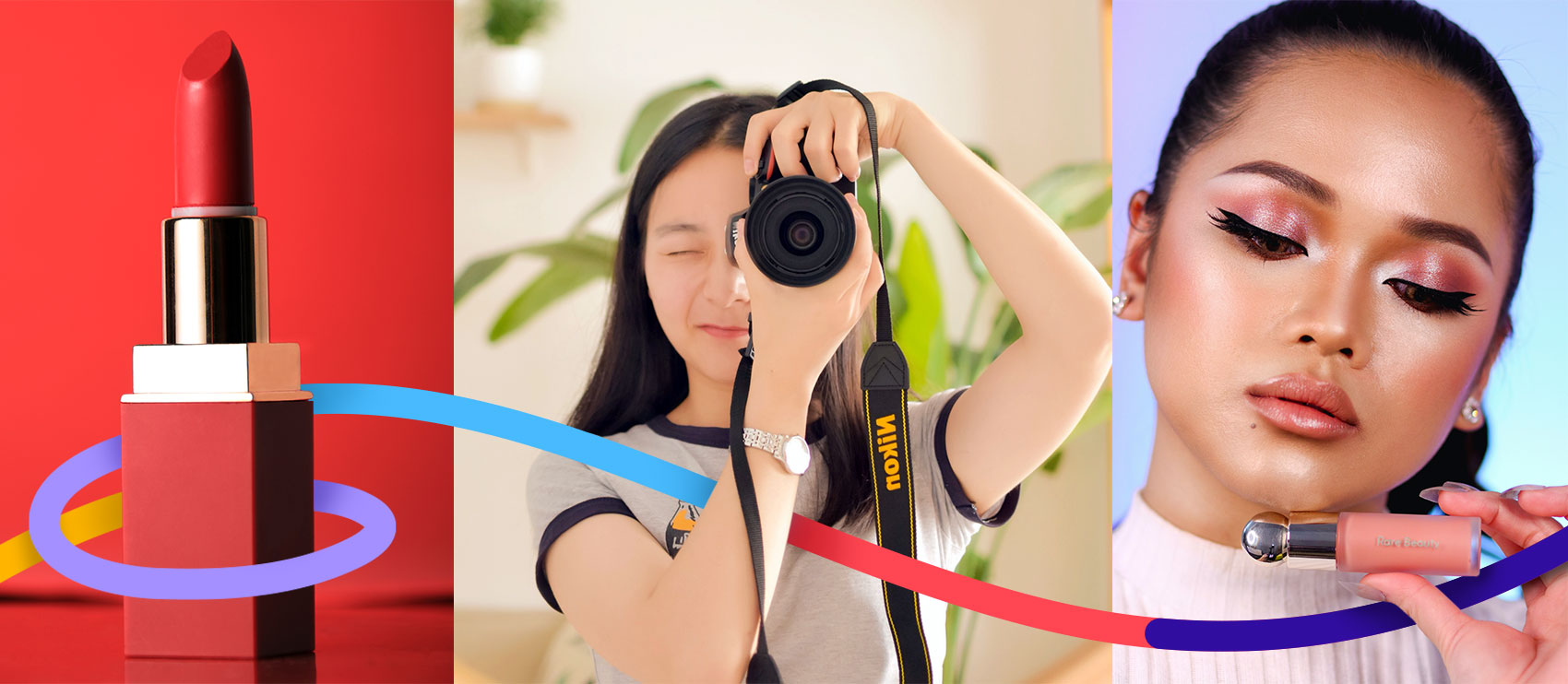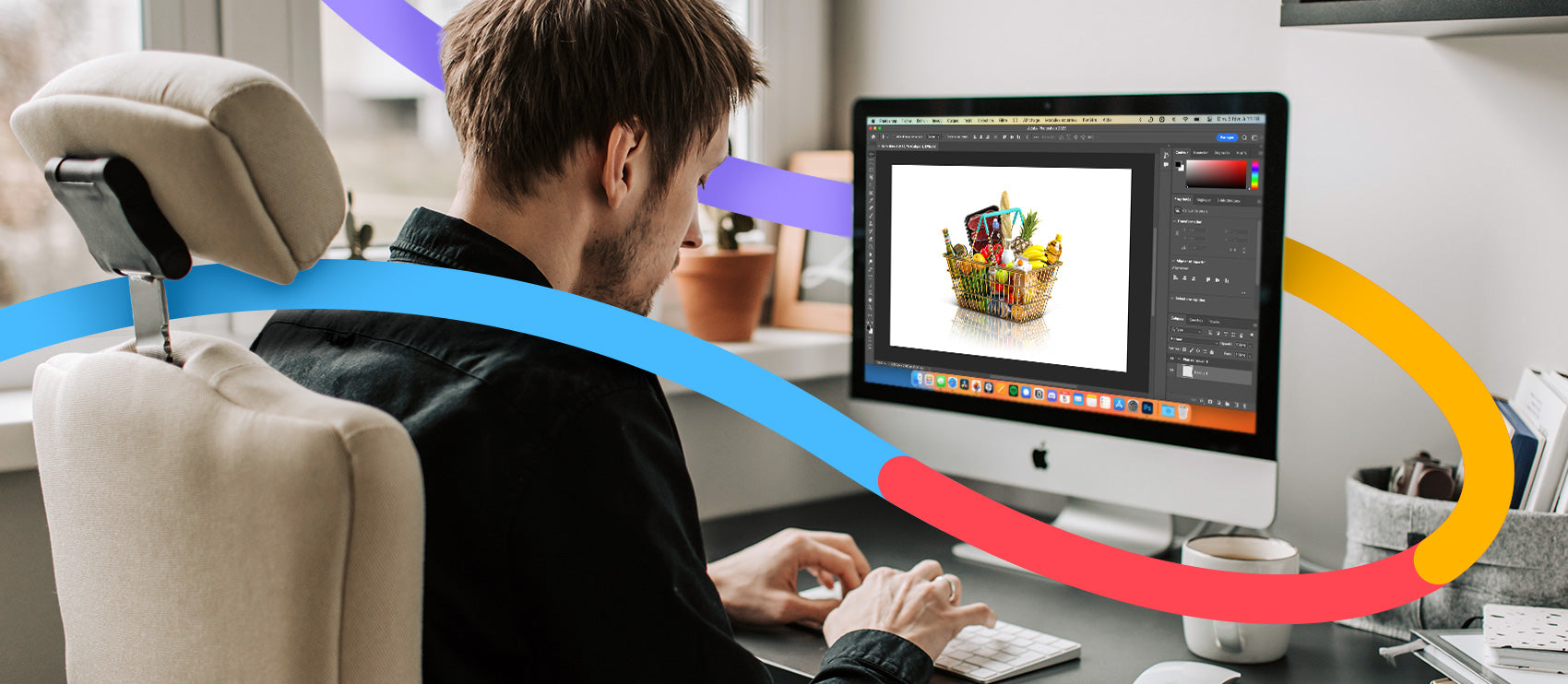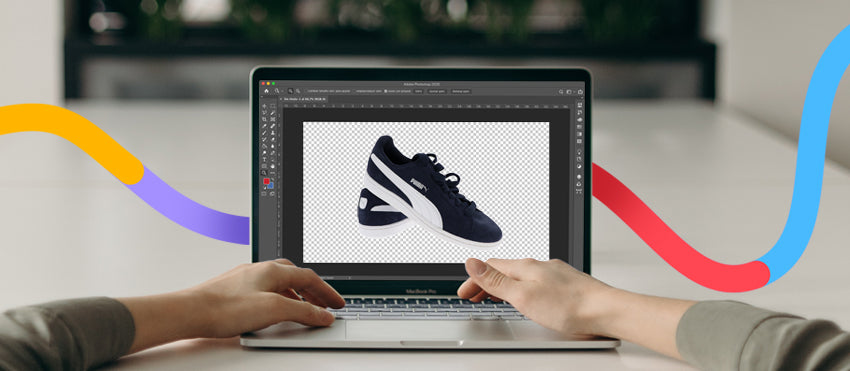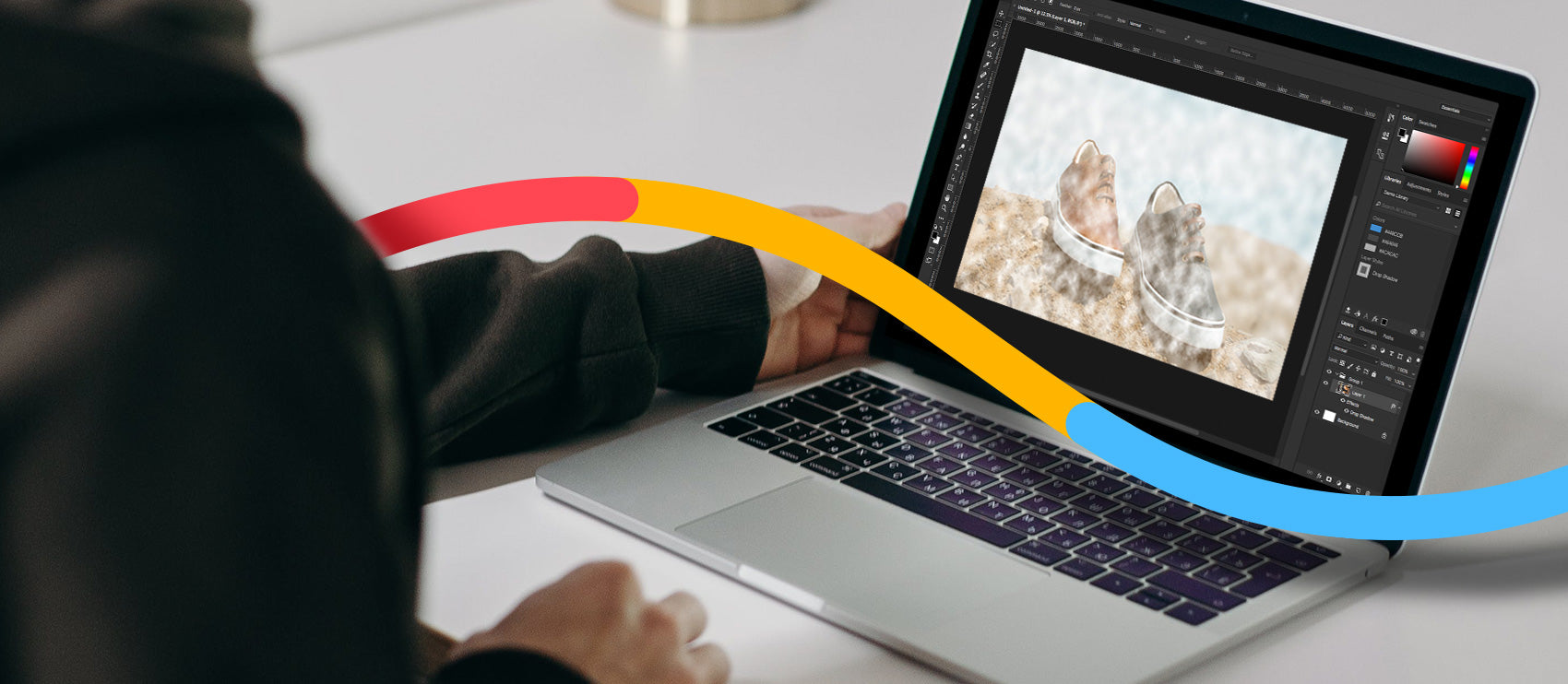Many entrepreneurs start their business ventures wearing all the hats and doing everything themselves.
But at a certain point, it makes sense to outsource certain tasks to external companies.
Take product photo editing, for example. Endless hours doing tedious retouches or fighting with Photoshop could be spent time thinking about a new product line, the creative approach for your next shoot, or how to increase sales and grow your business. Outsourcing to a trusted virtual photo editing studio could be just what you need to free up time and spend little capital.
What is outsource editing?
Outsource editing is when you delegate the post-processing tasks that follow a photography shoot to a third party. When it comes to product photos, it’s best to look for outsourced photo editors who do the work by hand and not using some automated tool or artificial intelligence software.
Even after the perfect shoot, some retouching is almost always required. You might need to remove the background, adjust shadows, add a mannequin, or change the color of the product.
Also known as image editing, post-processing, Photoshopping, image manipulation, and photo enhancement, these tasks prep your images for use on your website, Amazon, social media, or even printed marketing collateral.
Why do companies outsource photo editing services?
According to a 2020 survey from Deloitte, the main objective of outsource editing is cost savings. Flexibility and agility in running a business are two additional important reasons for outsourcing.

Businesses that outsource photo editing have woken up to the fact that, with a style guide and strong brief, the best photo editors can match their brand look and feel—as if the images were retouched in-house.
As Dell’s division dedicated to serious gamers, Alienware is quite particular about how its supercharged PCs should look. It provides clear guidance to its agencies, photographers, and partners on how to shoot and retouch its products.

Source: Alienware Brand Guide 2016
From angles to contrast, lighting transitions to background colors and shadows—it doesn’t leave anything to chance. It’s not afraid to ask photographers and art directors to “push the boundaries of product imagery” and choose angles that are “interesting and dramatic.”

Source: Alienware Brand Guide 2016
An effective photography style guide includes the following, at bare minimum:
- Details around lighting, angles, reflections, and shadows
- Clarity, or how soft or sharp the images should look
- Contrast and color saturation guidance
- How to arrange your products with live models or ghost mannequins
With the confidence that photography partners share brands’ vision and can match look and feel, more and more businesses and photographers alike are outsourcing photo editing services.
Who should outsource photo editing?
Hiring photo editors is one of the smartest things a photographer can do to help their business. But it’s not just photographers. Many other professionals look for help outside their company when it comes to photo editing.
Photography professionals who take product photos for clients
- Director of photography
- Photographer
- Retoucher
These photography experts know how to use editing tools, but prefer to focus on tasks that offer more value to their clients (and charge higher rates for them): finding the unique look for a shoot, solving a creative or a retouching challenge (instead of time-consuming and repetitive edits), etc.

Creative professionals at agencies that shoot product photos for brand clients
- Creative producer
- Creative services manager
- Creative director
- Graphic designer
- Art director
Products need to look flawless in advertising, but the masters of creativity can’t spend their time editing. They’re billed by the hour, which means they need to focus their time and efforts on ideating and producing the best campaigns for high-paying clients.

Editorial professionals
- Editors
- Web / digital specialist
- Director of publications and design
Any digital or traditional magazine with product reviews, comparisons and guides need to display the featured goods in an attractive and consistent way. Take Wired Magazine’s Bluetooth speaker buyer’s guide, for example.

Ecommerce professionals in a variety of roles
- Ecommerce manager
- Director of ecommerce and digital marketing
- Chief Marketing Officer (CMO)
- Marketing manager
- Web manager / web content manager
- Founder
People in this list are involved in the production of the shots that will make you click on the "Buy now” button. These professionals might wear the photo editor hat, or decide to work with a trusted partner to reap the benefits of outsourcing.
![]()
7 benefits of outsourcing product photo editing
The cost of basic photo editing should be minimal. But budget still represents a barrier for many professionals.
But it’s important to avoid looking at the cost in isolation, without considering all the benefits that come with photo editing services.
If it wasn’t for some obvious advantages, the professionals listed above wouldn’t outsource their photo editing, right?
This is what you experience when you outsource your photo editing:
1. More capital to reinvest in your business
This might seem counterintuitive, especially if you're only looking at the money you're not spending by doing the photo editing yourself. But when you outsource, you don’t have to pay for expensive software or invest in learning to edit like a pro.
2. Time to focus on more important things
As a business owner, there are some tasks you cannot outsource, and these are the ones you should focus on. Delegating tasks like photo editing to a trusted partner frees up time for you to:
- Focus on projects that generate high revenue
- Plan for the future
- Upskill yourself and look out for ideas that will help your business grow
- Have more bandwidth and a smaller to do list
- Spend more time with your friends and family (surely you don’t want to outsource that!)
3. Room to be more creative
Photo editing is not the reason why you started your business, right? Coming up with new ideas to engage with your audience, solving your customers' problems and creating something new and unexpected sounds more like it. When you outsource, you go back to doing just that.
4. Increased profits
The expression time is money might have been created by someone in the creative industry. In this field, talents bill by the hour and based on the task—the more creative the task, the higher the rate. And if you own a business, a similar principle applies to you. When you focus on strategic tasks, you give yourself the chance to create a unique offering that people are willing to pay a higher price for.
5. Improved efficiency
Dreaming about a perfectly oiled business machine? When you outsource your photo editing, you can reduce the time it takes from photoshoot to image upload or dispatch. Optimizing your internal processes will give you the chance to take on more and different types of projects.
6. New services or lines of revenue
As a photographer, you can add professional photo editing to your list of services, even if you’re not fully proficient in Photoshop. Just get a helping hand from a team of editors. Yes, their services come with a fee, but basic edits often are very affordable and you can add a margin on top of the cost to ensure you make a profit.
7. Reduced stress and burnout prevention
Photoshop is a powerful tool, but learning to use it is hard! Even when you know how to use it, you can still spend hours retouching countless photos, and end up missing deadlines, getting stressed and losing sleep.
Finding a trusted team of editors allows you to:
- Meet tight deadlines. You can submit your photos in the evening and get your edits done overnight. This helps you manage multiple shoots at the same time and never miss a deadline.
- Win the trust of your colleagues and clients. Because promising your photos will be ready by a certain date and having to disappoint your client or colleagues is not very professional, is it?
- Access photo editors as your needs change. If you need to develop product photos only seasonally for example, hiring and managing in-house editors doesn’t make sense. During less busy periods, they will become a cost to the business. Freelancers are not the solution either. Finding them during busy times is hard and they don’t have the same capacity of a whole studio.
How good would you feel if you introduced even just one of these advantages into your busy work life?
Barriers to outsourcing product photo editing
If there are so many advantages, why doesn't every busy professional outsource photo editing? Unfortunately, there are some perceived barriers that prevent people from outsourcing product photo editing. Perceived, means they’re not real, but influenced by some common psychological bias.
Let’s have a look at these sneaky traps (our minds can be tricky sometimes!) to make sure you don’t fall into them. Professionals who don’t outsource product photo editing:
- Think it’s quicker to do it themselves. These people start by saying: “It’s only a small job” and end up spending the next four hours retouching. The real issue is they don’t realize that a quick retouch multiplied by tens or hundreds of photos requires more time than they think. And if you’re looking for how long it really takes to edit product photos, here is the answer.
- Believe it’s cheaper to do it in-house. Oftentimes, companies or photographers prefer to take care of their photo editing to have more creative control. That’s because they are after a particular look or want to experiment and find it while editing the shots. But with basic photo retouches, outsourcing ends up almost always being cheaper. So before you decide between outsourcing your photo edits or doing them in-house, I highly recommend you read this guide.
- Don’t trust others to do a good job or think they’ll do it better. Do you know those people that are always stressed because they can't get any help? They believe that no one else on the planet can do what they do. The antidote against this is to convince them to delegate just once and see what happens (usually, after seeing the result is up to their standards, they relax and never look back).
- Worry that it’s too hard or will take too long to explain. This usually happens when complex retouches are involved. Photographers and Art Directors have a vision in their head and struggle to communicate it or think others won’t be able to understand it. But they underestimate that the briefing process has the power to strengthen their vision by making it clearer for themselves and testing it, risk-free, on a first audience: their photography partners.
- Think the admin will take too long. These people often think that it takes longer to find and manage a supplier than doing the retouches themselves. That’s because they have never used an online platform that lets them get a quote, upload their files and download their edited images in 5 simple steps.
How to know it’s time to outsource your photo editing
An easy way to find out if you should outsource your photo editing is considering how much this is costing you. If you do it yourself, it’s free, right? Not really, if you consider the ‘opportunity cost’.
In microeconomic theory, the ‘opportunity cost’ is the loss or the benefit that could have been enjoyed if the alternative option was chosen.
Put simply: would the time dedicated to retouching your product shots generate higher returns if spent on other tasks?
If you’re a photographer you should start by looking at how much you charge for your product photography editing and compare the below:
- a.) Profit from keeping photo edits in-house. Let’s take a photo shoot involving 50 shots. If hand-drawing clipping paths takes five minutes per photo, you’ll need over four hours for the whole batch. You charge $80 per hour, $320 in total. From this you need to detract the pro rata cost of your Adobe Photoshop and Lightroom plan, your equipment and electricity costs, the courses and time you spent to learn how to edit (probably around $10) and you’re left with $310 in profit.
- b.) Profit from outsourcing photo edits. For a photo shoot of 50 shots, outsourcing hand-drawn clipping paths to a photo editing service like Path would cost you $19.5 (no need to worry about photo editing your equipment and electricity costs here). You charge your client $320 as per the example above, which leaves you with $300.5 of profit in your pocket and four hours of free time.
- c.) Profit from the time gained. In the four hours you have up your sleeve, can you squeeze in another product shoot? Assuming your photography rates are higher than your retouching rates, you charge $150 per hour, and once you take out your costs ($20 for transport, equipment, etc. and $19.5 for photo edits) you’re left with $560.5 in profit.
Now add the profit you made outsourcing your photo edits (b) to the one from the time you gained (c). If this is more than the profit you make by keeping your photo edits in-house (a), you know it’s time for you to outsource your photo edits.
Based on our example above (b + c) = $861, which is indeed more than (a) = $310.

How to outsource product photo editing: 3 easy steps
Now that you’ve realized this is one of the best things you can do for your business and happiness, let’s walk through how to outsource photo edits.
1. Identify which types of edits you can outsource
Tedious edits that require a lot of time, like background removal and basic photo retouching, are ideal to outsource. It’s important to get every edit right because shoppers are on all kinds of devices with all sorts of zoom functionality. You want every pixel to be just right. It’s not exactly a fun creative exercise. Not to mention, these types of edits are generally affordable.
These are some of the photo editing jobs you should consider outsourcing:
- Clipping path. Isolate and cut out products from the background so you can repurpose them for your website, lifestyle composites on social media, and white background shots for Amazon. .
- Image masking. More complex and advanced than basic clipping paths, image masking allows you to cut out items with undefined edges, like hair or fur.
- Photo retouching. Maybe the sample arrived all dinged up—with no time to get a replacement. Maybe your makeup artist missed the mark this time. Whatever it is, the right photo editors can fix scratches and spots, remove wrinkles and imperfections, and enhance the textures in your images.
- Shadows. Shadows give your photos dimension and make your products jump off the page. The challenge is creating shadows that look real. Layering, masking, messing with density, and feathering takes precision and patience—and lots of time.
- Ghost mannequin. When budgets and timelines are tight, mannequins are the perfect substitute for live models. To edit out a mannequin, you have to piece together multiple photos, add depth, increase volume, and give it just enough texture to create a convincing product photo.
- Color variants. When you have several color variants for a single product, it makes sense to shoot it once and change the color later with photo editing software.
2. Create a budget
To know how much you should put aside for your photo editing, consider:
- The subject of your photos. If you have clean-cut and solid-colored products you can normally get away with a small budget. But for fuzzy or intricate shapes or boundaries the editing cost increases.
-
The types of edits you need. Usually, clipping path edits and simple photo retouches require less time than complex image masking and drop shadows. A creative or artistic edit also costs more than a standard edit.
All associated costs, including the time you need to request a quote, liaise with the editors, send or upload the photos, etc. Time spent on these tasks is a cost to your business. - Your margin. Make sure when you subtract the photo editing and all other costs from the job revenue (if you’re a photographer) or the sale of the product (if you’re an ecommerce business) you end up with a margin you’re happy with.
3. Choose the right partner
Avoid the following red flags when searching for an outsourced photo editing studio:
- High price. These are businesses that combine high-quality output with fast services. As you’d expect, these are attractive features that result in higher-than-average prices.
- Slow turnaround time. These companies offer good editing services, but the only way for them to run a sustainable business is to have small teams that juggle many jobs at the same time—at the expense of your photo edits’ turnaround time.
-
Inferior quality. The market offers solutions for everyone. Even those who look for a fast and cheap job. But the issue is that these people end up compromising on the quality of the job. Remember to look for strong portfolios.

When searching for the best photo editing outsourcing partner, look for:
- Strong previous work. Peruse the website and portfolio. Read customer stories and ensure the studio can help businesses like yours. Look for testimonials from customers with similar products and photos as your business.
- Experience in your industry. Are you in fashion, FMCG or do you sell luxury goods? Every industry has its own visual language and your editing team needs to be familiar with it.
- Customer reviews. Look at Google reviews as well as any profiles on customer review platforms, like Trustpilot. Be wary of potential fake clipping path service reviews.
- Great communication and support availability. When dealing with more complex photo edits, you might worry that editors won’t understand your vision. Communicating with retouchers should be easy. Path’s editors are available 24/7 via email, and we know how to take direction and interpret clients’ needs.. And if something isn’t quite right, we’ll revise the work until you’re happy with it.
- Humans. While AI might have its place for basic edits, the technology is very limiting, especially from a creative standpoint. AI software executes standardized tasks and can’t take creative direction from the customer. Sometimes, your product photos need a human touch.
- Versatility. Look for a company that can do different types of edits. You might receive your edited images and only then realize you need a different type of edit to take the shot to 100%. You want a team that offers all the services you’ll need.
- Turnaround time and rushed jobs. How fast is your team? Can they speed up the clock for you? When time is of the essence, you want editors who can pull out all the stops.
- Corporate social responsibility (CSR). The last thing you want is finding out that your editing partner doesn’t adhere to sustainable and socially responsible practices.
- Competitive pricing. A cheap price isn’t everything, but choosing Path means you can have competitive prices without compromising on quality or speed.
- Security. Security rarely makes it to the list of criteria. But dealing with a supplier that doesn’t take these issues seriously can expose your IT infrastructure to serious risks, which will result in high costs and stress. Make sure you look for their certifications and ask for an NDA.
How much it costs to outsource photo editing
Pricing for Path photo editing services start from 25¢ for shadow edits and 39¢ for clipping path and background removal. There are no monthly or annual subscriptions. You can also save a bit—and speed up the checkout process—with Path credits.
But choosing the right partner shouldn’t be done purely on price.
While cost is a very important factor, there’s more to weighing the costs of outsourced photo editing.
Comparing photo editing prices from the different companies’ websites isn’t straightforward. You can find different approaches to costing: by the hour, per image and per batch (50, 100, and so forth). Some offer you a per-image cost, but are subject to a monthly or annual subscription.
Others don’t communicate prices clearly, and instead entice you to submit a few photos to find out. These companies hope since you’ve already invested a bit of time, you’ll choose them even if their price is higher than other options.
Getting the best results from outsourced photo editors
If you’ve come this far, you’re really committed to getting the best looking photos that generate results for your business. Smart move.
Before we leave you, let us help you bulletproof the process of working with outsourced photo editors with these extra tips.
Think about where the photos will appear
If you’ve taken photos for a landing page, they’ll need to be high-impact and have enough room on either side of the product to interact with some text, i.e. a headline and brief body copy. If they’re for product pages on your online store or third-party marketplaces, you’ll want to have a tighter crop and show the product as true-to-life as possible.
Draw a scamp or develop a mockup
To have a preview of the end result and avoid any creative issues, draw a quick scamp of the webpage, or develop a rough mockup of the packaging or point of sale item you are producing. This will help you test your vision and understand what type of images to choose and the services you need to outsource.

Think about how you want your customer to feel
What emotion do you want your customer to feel when they see your photo? Do you want to take them to a dream-like, fantasy world, or do you want them to feel energized and ready to take on a new challenge? This will help you get clear on the type of look (and therefore edits) you need to achieve.
Select your shots
Culling is the key to focus your energy on the best shots only and ultimately save time and budget. The good news is that by following the previous tips, you’ll get full clarity on the type of images you need, which drastically speeds up the selection process.
Be clear on which types of edits you need
Once you have selected the shots you need and have a clear idea of their purpose and how they should look, it’s easy to understand what edits you need. Just refer to the section above to see what types of edits you can outsource.
Give clear directions
When it’s time to brief your editors, make sure you give them as much information as possible. Send them your brand or style guide, share the scamps and mockups you’ve created and take them through the vision you have for the look. Invest in this phase, as it’ll help you avoid misunderstanding, and improve your process for next time.
Organize your photos
To make your and your editors’ life easier, define a process to manage your files. Need a hand with that? Here is a simple guide to organize your product photography files.
Ask questions
Asking questions is very important, at every step of the process. When you’re vetting options, it’s how you test your editors’ communication skills and confirm they’re a good fit. When requesting a quote, it gives you confidence you’ll receive the right level of service. From the briefing stage right through the end of the job, asking direct and constructive questions is how you and your editors can align creatively and around the ways of working.
Provide feedback
Especially for the first few jobs, let the editors know if you’re happy with the work. This gives them a chance to understand how you expect things to be done and rectify any potential issues.
Get started with your outsourced edits
Now you should know how to find out if outsource product photo editing is right for you and what is the best process to follow.
Ready to get a hand with your editing and work happily ever after? Give Path a go. We’ll look after your image edits, so you can get back to the stuff that gives you joy and cha-ching! 🌟💰
Let us look after your image edits, so you can get back to the work you love
Learn more













